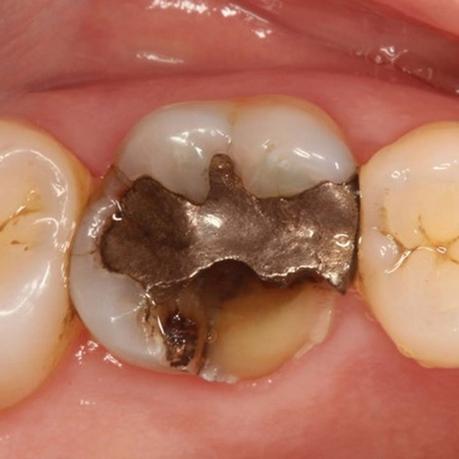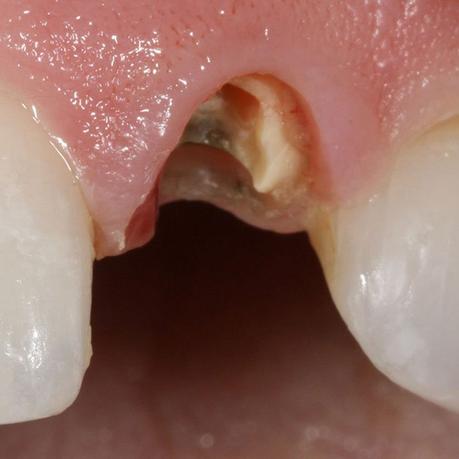
Is it dangerous to leave the root in the gum? What is the reason for the root remaining inside the gum? A broken tooth and not extracting the root from inside the gum is always a worrying incident and many people are afraid to remove it. Various reasons such as sudden impact, tooth decay, and dentist’s error cause this to happen; So, the tooth is out of place and the root remains inside the gum. If you are not aware of the presence of the root inside the gum or if you refuse to treat it, after some time the tooth will heal and the gum will cover the root of the tooth. But does this result in a particular problem or not? Should we seek treatment if we are aware of it?
Is It Important to Keep Broken Tooth Roots in The Gum?
The remaining roots in the gums are associated with unpleasant side effects such as sensitivity, pain, and infection, which must be examined and removed by a dentist. Usually, the teeth are hidden under the gums for various reasons, such as breakage or lack of full growth, which requires surgery to be removed. It is possible to remove the tooth from under the gum surgeons, and in some cases, only by making a small incision on the gum, the removal operation can be done easily. But sometimes hidden tooth surgery is difficult and comes with many complications.
A dentist uses special tools to extract teeth. While removing the tooth, the surgeon applies slow and steady pressure on it, during which the patient may feel a little discomfort. But after the tooth is removed, everything goes back to normal. In some rare cases, after tooth extraction, a piece of bone inside the gum may be felt that this remaining piece will move to the empty part of the tooth after a while. Then it irritates the tongue and over time the possibility of gum infection increases.
In What Cases Is Surgery Used in a Tooth Extraction?
Dental surgery is necessary when a wisdom tooth is embedded or a broken tooth for any reason. It is impossible to extract a damaged tooth or broken tooth that has not yet come out naturally from the gum with the usual methods of extraction. During the surgical procedure, the doctor accesses the tooth by making an incision on the gum and removes the tooth from the jaw by applying the necessary force. Then he sutures the remaining wound.
Tooth extraction is a bit scary compared to common dental procedures and services. Especially if it is accompanied by surgery. But by talking to the dentist and providing the details of the surgery, you can get more prepared for the surgery and experience a comfortable feeling during the surgery. The dentist first examines how to maintain and repair the broken tooth, and if the damage is so severe that he is not able to fix the problems, he will have to pull the tooth.
What Method Is Used when The Root Remains in The Gum?
Do you know what trauma is? One of the effects that cause the root to remain inside the gum is trauma. Trauma is the sudden blow to the teeth that causes the tooth to break or be lost. This may happen as a result of accidents, fights, and falls, which use surgical methods to extract the root. Root canal surgery is a bit more complicated than other dental surgeries. Usually, this procedure is performed by oral and dental surgeons. But some experienced general dentists also do this. First, the doctor makes a small incision on the gum. Then by removing a very small amount of bone tissue around the tooth, it stimulates the tooth to come out and pulls it out easily.
But for tooth extraction in the usual way, the whole tooth is visible and consists of roots that are very easy to separate and do not require surgery. During this treatment, the dentist uses special tools to remove the tooth, and by applying slow and steady pressure, he pulls the tooth out of its position with forceps.
Many people ask questions, does tooth extraction hurt more or nerve extraction? Each of the dental procedures is performed under local anesthesia. So, you don’t have to worry about pain and discomfort. But in general, after the surgery, the pain caused by the gap and space in the tooth is much more than in other dental procedures. which can be relieved by taking prescribed painkillers and disappears after two to three days.
QUALITY AFFORDABLE DENTAL IMPLANTS
Copperhills Family Dentistry specialists provide specialized dental services that help our patients cultivate healthy and happy smiles. We’re happy to provide compassionate care coupled with cutting-edge technology.
dental implantsRemaining broken tooth root in the gum
Sometimes, the root remains in the gum, there is no unpleasant feeling. For this reason, a person may not try to pull it out. But you should note that the root remaining in the gum is infectious and may increase the possibility of serious oral and dental health problems after a while. Usually, the occurrence of infection depends on the age of the person due to the root remaining. The stronger the body’s immune system, the lower the chance of infection from a broken tooth root. But when a person’s immune system is weakened, there is no doubt that a latent infection will occur inside the gums, which in serious cases will be accompanied by swelling and pain.

Whitening cosmetic
dentistry dental cleaning
and checkups
Aftercare for root canal surgery residual (residual) gum pain
After the end of any treatment, it is necessary to perform the recommended care. Because it helps to heal teeth and mouth much faster. So, after the surgery of the remaining root in the gum, pay attention to the tips given by the doctor and be sure to follow oral and dental health care. In the following cases, you will get to know some common care after endodontic surgery:
- Avoid strenuous activity or excessive head movement.
- In the first few days, it is better to eat cold and soft foods, there is nothing wrong with improving the conditions of eating warm and solid foods.
- Do not irritate the surgical site.
- Wait for the healing period to pass naturally.
- It is recommended to avoid smoking in the first 48 hours. Smoking causes clotting and delays the healing process.
- After 24 hours, rinse your mouth with salt water to disinfect the affected area.
- If you feel pain and discomfort, you can relieve the pain caused by tooth extraction or gum root extraction by taking prescribed drugs such as ibuprofen.
- In the first few hours after the surgery, do not remove the sterile gauze from your teeth and prevent bleeding by pressing it.
- You can put ice packs on your face to reduce swelling. After the swelling is resolved, it is recommended to use warm compresses.
Conclusion
If you have a problem with the root remaining in the gum, it is better to first talk to an experienced and professional dentist in the field of surgery and ask his opinion on removing it. If you need surgery, pay attention to the doctor’s words and recommendations so that he is fully prepared. Otherwise, you don’t need to worry as long as the root doesn’t cause any problems for you.
What Tools Does The Dentist Use to Extract Teeth?
The tools used for tooth extraction include the following, which are divided into two general categories: elevators and forceps:
Elevators; Tooth loosener
The first stage of tooth extraction or root extraction is its loosening, which begins after anesthesia. Tooth loosening is done using a tool called an elevator, which destroys the connection between the tooth and the soft tissue of the gum, and placing it in between, causes the tooth to loosen. Elevators have various applications and are designed in different shapes and sizes.
Forceps; Tooth extractor
After loosening the tooth, it is time to extract it. A device called forceps is used to extract the tooth. This dental tool is also designed in different shapes and models; So that the dentist uses special tools for upper and lower jaw teeth and any type of teeth.
Among other tools needed for tooth extraction, we can mention a needle holder and a surgical cut. Suction is also used to extract secretions inside the mouth during surgery.

